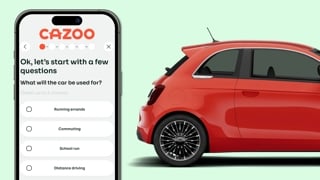The number of used car buyers saddled with outstanding finance on their new vehicle rose from one-in-four to one-in-three during 2017, claims HPI.
Calculated with data compiled from the number of finance flags raised in 2017, over six million used cars were identified or ‘flagged’ as still having finance owing on them, HPI said, with a further 2,437,025 finance hits flagged by end of April this year.
Fraudulent activity only takes place if the vendor tries to sell the vehicle with existing finance still owed, without letting the buyer know, but the problem appears to be on the rise either way.
HPI said that more than three-quarters of new car sales to private owners are through finance, due to the rise of PCPs, adding: “There is statistically more chance than ever of buying a vehicle that hasn’t yet been paid for.”
Fernando Garcia, head of consumer at HPI, said: “Buying a car with outstanding finance can land the unwitting buyer in trouble as most finance agreements or loans will grant the lender ownership of the vehicle until the debt has been paid.
“The debt stays with the vehicle not the borrower. Even if a buyer bought the vehicle in good faith, if the finance hasn’t been settled then the lender could repossess the vehicle, meaning you could lose the car and the money you paid.”
In 2017, the percentage of 4x4s HPI flagged as having outstanding finance was 41.8%, campers (48.5%), coupes (43.3%), executive cars (40.5%), luxury cars (31%), performance cars/hot hatches (48.6%), supercars (40.9%), MPVs (33%), taxis (27.2%), tractors (30%) and vans (29.5%).
Garcia added: “The first thing any used car buyer must do is ascertain whether the potential purchase is actually paid for.
“It’s impossible to tell if a vehicle has outstanding finance just by looking at it, which makes a vehicle history check an even more vital form of protection for buyers.
“An HPI Check can help protect consumers from buying a vehicle with something to hide, saving them cash as well as keeping them safe.”



















M Gibson - 28/07/2018 12:25
If a car has outstanding HP/PCP and was purchased in good faith as a private purchase (not from a dealer), the finance company DOES NOT HAVE THE RIGHT TO REPOSSESS. This is dealt with in the Consumer Credit Act 1974. I suggest checking your facts.